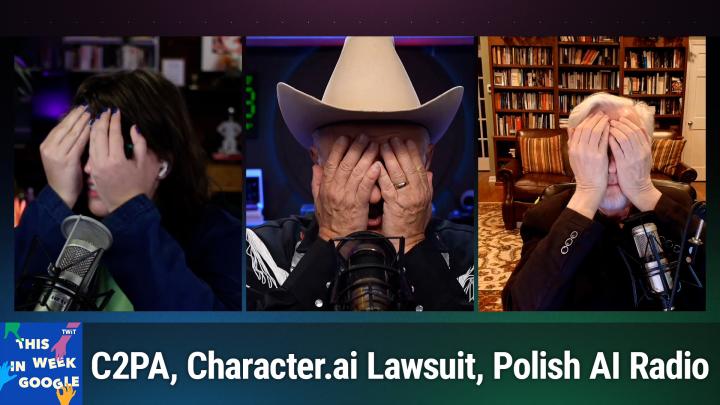Content Authentication in the AI Era
AI created, human edited.
In a world where artificial intelligence can generate increasingly convincing fake images and videos, how do we maintain trust in digital content? This crucial question took center stage in a recent episode of This Week in Google, where host Leo Laporte and the team welcomed Nathan Freitas, director of the Guardian Project, to discuss the emerging C2PA standard and its implications for digital trust.
The Coalition for Content Provenance and Authentication (C2PA) represents a significant evolution in how we verify digital content. As Freitas explained, think of it as "EXIF with cryptography added onto it." This standard allows for the signing and notarization of metadata in photos, videos, and audio files, creating a verifiable chain of custody for digital content.
Unlike traditional metadata systems, C2PA includes:
- Cryptographic signatures
- Revision control capabilities
- Timestamps from third-party servers
- Cross-format compatibility (JPEG, PNG, MP4, etc.)
Major players across the tech industry are embracing this standard:
- Adobe has integrated it into Photoshop through their Content Credentials system
- Camera manufacturers like Leica, Sony, and Nikon are implementing it
- LinkedIn is already displaying content credentials
- YouTube has begun implementing basic authentication tags
The Guardian Project's "Proof Mode" application served as an early inspiration for C2PA, what Freitas playfully called "C2PA on steroids." Their open-source approach offers an alternative to manufacturer-locked solutions, allowing users to generate and control their own authentication keys.
The implications of this technology extend far beyond casual photography:
- War crime documentation in Ukraine
- Natural disaster damage assessment
- Conservation efforts
- Legal evidence verification
As Freitas shared during the discussion, Georgetown Law School is already exploring how this technology could revolutionize the concept of "self-authenticating evidence."
An important point emerged during the discussion: the absence of C2PA credentials shouldn't automatically invalidate content. As Paris Martineau noted, we're experiencing a "seismic shift in the way we experience reality," and the transition to widespread adoption will take time. Freitas drew a parallel to the HTTP to HTTPS transition, suggesting that while C2PA-verified content might eventually become the standard, we're still in a period where traditional verification methods remain vital.
The Guardian Project's "Baseline" initiative perhaps best encapsulates the urgency of this movement. This ambitious project aims to create a "notarized database of reality" before the line between AI-generated and authentic content becomes too blurred to distinguish.
Several hurdles remain:
- Implementation inconsistencies across platforms
- User interface challenges in displaying verification information
- The need for broader adoption among content editing applications
- Concerns about centralization
As our digital landscape becomes increasingly complex, standards like C2PA offer a promising path forward. While technical challenges remain, the collaborative effort between organizations like the Guardian Project and major tech companies suggests a future where digital content authentication becomes as standard as HTTPS is today.
Download This Week in Google and subscribe to keep independent tech journalism alive.
